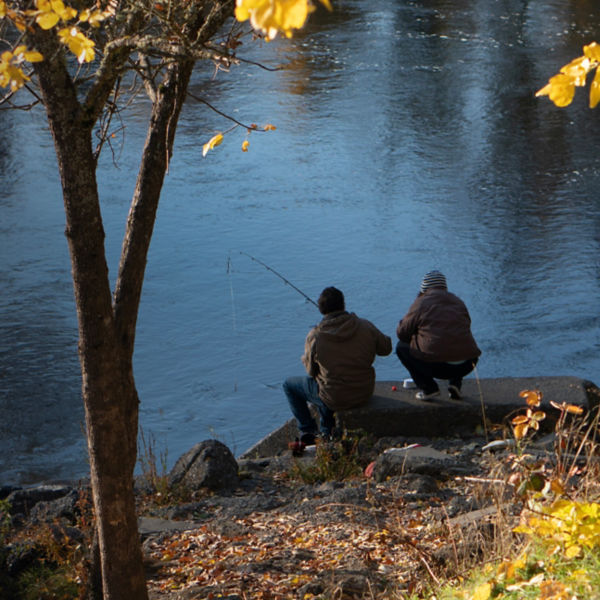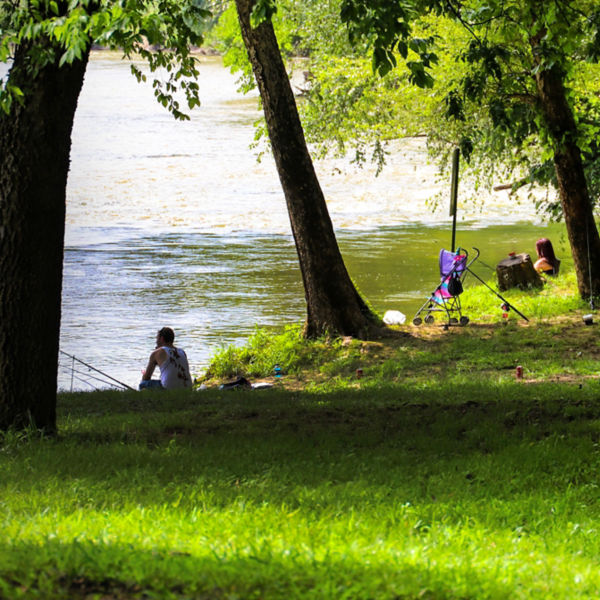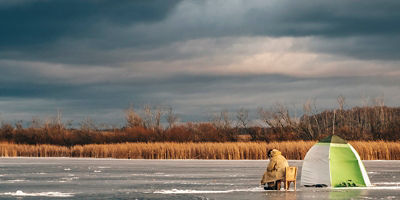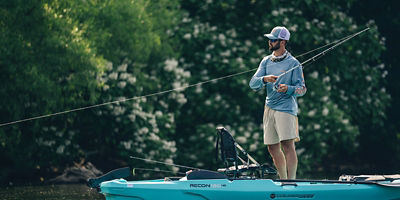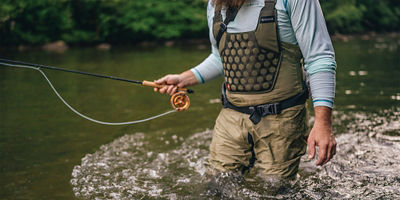
There are few outdoor adventures as exciting as the feel of your lure getting forcefully hit, the excitement of that line tightening, and the battle ahead. While backwoods creeks, local docks and favored fishing holes will always hold a place in our hearts, the added access and new options that a powerboat provides can take your angling to a new level—or at least to new depths. It can be a whole new experience, not to mention an effective way to increase your odds of hooking up.
So, What Is Inshore Fishing?
The definitions of inshore boat fishing will vary from region to region and even angler to angler, but the primary factor is its clear distinction from offshore fishing. Inshore fishing is brackish or saltwater fishing that is on or connected to the ocean but done closer to the coastline. Think: bays, rivers and estuaries. But the big difference isn’t so much the distance from land as the depth of the water. Offshore fishing is most often farther off the coast for gamefish, or pelagic fish, at different depths in the water column, but always in deeper water.
The Big One
Obviously, inshore boat fishing requires a craft. Boats are expensive investments and famously unpredictable, plus they require a lot of maintenance, which requires either your cash or your time (depending on your mechanical knowledge levels). There are several ways to try boat fishing without going all in on your own vessel. You can rent boats from docks or arrange a commercial fishing outing. Larger charter options include “head” boats or “party” boats that have room for at least 6 and at most 150 passengers, drifting through or often anchoring at various locations for all passengers to fish. These can be fun and affordable, as you pay on a per-passenger basis.
Another charter option is booking a spot on a smaller boat (a “six-pack” is a boat that holds up to six anglers plus the captain), or a private charter where you book the captain and entire boat for just you and friends on a by-day basis. Get a charter out of Southern California for a day of corbina fishing or hire a boat to get you on a wreck off the Carolinas to pull up some sea bass. These are more expensive than a party boat, but a great way to get on the fish, even if you or your friends/family have no experience.
Gear To Bring Aboard
With any outdoor activities, you need to prepare for the elements. When you’re fishing from a boat, it might even be more important because you can’t just run back to your vehicle or cruise into the lodge. No mariner is so in tune to the atmosphere that he or she doesn’t get surprises on the water. Depending on conditions, it could be the rain, cold or wind that get you, and very often the sun. The challenge is to pack for all of it without having enough gear to sink the boat (or at least irritate the captain). Go for lightweight, multi-functional gear, whether you’re hunting tarpon in Florida to salmon out of San Francisco.
A crucial piece of gear is a sun shirt. Various brands have different names for them, but they’re basically lightweight shirts and sweatshirts made of polyester that provide full coverage from the sun, often long-sleeve with a hood and sometimes even a face mask. The key here is UV protection while keeping you much cooler than a cotton shirt or hoodie, one of those “best of both worlds” items to protect you from the sun—or buffer you from the cold with other layers added to them. If you take spray over the bow, they dry fast, keep the bugs off, wick moisture and generally feel comfortable in warm weather.
Another clutch item is a packable shell. Conditions change fast on the water and it’s great to have protection that takes up little room onboard. Frankly, this is something any active outdoor adventurer should keep in their pack or vehicle all year for wind, rain and chill. It has to be fast-drying as well.
From there, your general clothing for the day should be dictated by the season. When temps warm, bathing suits or boardshorts both work. Any kind of hybrid cargo short is good. But don’t neglect your feet. Fishing and boating footwear is an outdoor gear category that’s grown significantly in recent years—for good reason. While flip flops or sandals will suffice in summer months or some warm-water spots, with any weather or off-season timing, you’ll need proper traction for safety with added foot protection and even insulation. Brands like XTRATUF have expanded their footwear options from their traditional NXT Legacy boot, used by commercial fishermen in Alaska, to traditional deck shoes. All slip-ons, the mainstay is a 6-inch Ankle Waterproof Deck Boots that have found their way to decks and docks all over the country for keeping your feet dry.
And a hat. The Mid-Atlantic’s fall striped bass fishing is legendary, but many days are frigid. And any kind of angling means early mornings and windy afternoons, so a beanie isn’t a bad idea even for a warm forecast. Caps or even full brim hats are needed for sunny days. Beyond that, sunblock and sunglasses are two other essentials for almost all fishing and boating, as the sun bouncing up off the water can have a strong effect just like the direct sunlight overhead.












